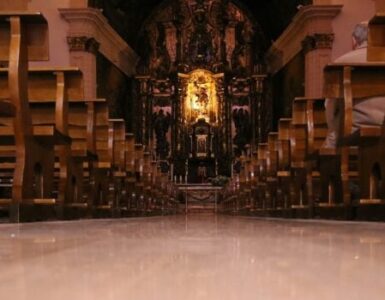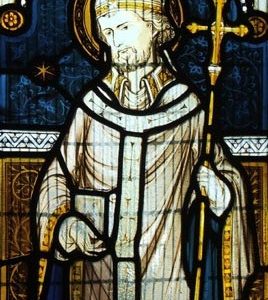Andrew Dung Lac was born in Vietnam in 1785. Desiring to serve the Church and his country by ministering to the Vietnamese people, he became a Catholic priest and then a missionary for the promulgation of the faith. He was beheaded on December 21, 1839 in Hanoi, Vietnam, for the offense of being a priest.
In the generations that preceded Andrew’s missionary work, Christianity did not spread peacefully throughout Vietnam. The first Portuguese missionary arrived in 1533. Many more followed, including the Dominican and Jesuit orders, but they were met with violent resistance at the hands of various political regimes. Waves of terror and torture were inflicted on all those who dared to carry the faith to the people of Vietnam, and thousands of Catholics and other Christians were murdered for their zeal in Vietnam from the middle of the 16th century through the 20th century. Priests, religious and thousands of foreign missionaries and lay Vietnamese faithful were killed by hideous acts of torture and abuse. There is no way to accurately count exactly how many martyrs died at the hands of religious persecutors.
In 1988, Pope John Paul II recognized Andrew Dung Lac and over a hundred others as saints by canonizing them in St. Peter’s Square. He publicly named 96 Vietnamese, 11 Spaniards, and 10 French martyrs. They are collectively known as the Martyrs of Vietnam (or Tonkin or Annam, the older names of that country). These men and women are named in honor of their own deaths, but also to commemorate the thousands of other martyrs who can never be identified, but who still share the stain of blood offered for the life of the Church.
In their canonization Mass, Pope John Paul II addressed the people of Vietnam saying, “Once again, we can say that the blood of the martyrs is for you, Christians of Vietnam, a well-spring of grace to make progress in the faith. In you, the faith of our fathers continues and is carried on to new generations. This faith remains the foundation of the perseverance of all those who, considering themselves authentically Vietnamese, faithful to their land, also want to continue to be true disciples of Christ.”
Lessons
1. Andrew and his companions were given many signs that they could be martyred, yet still they remained and continued with their mission to preach the Faith. Would we have stayed, or would we have tried to save our lives? Let us pray for the grace to live for Christ alone so that, laying down our lives for him, we may find the true and everlasting life.
2. Andrew and the other Vietnamese martyrs were betrayed by many of their countrymen under the disguise of requested assistance. In many cases, the future martyrs knew they were to be betrayed but did not refuse to help. How often have we refused to help someone or to forgive someone because we were certain of ulterior motives? But Christ wants us to be prepared to forgive always — not just seven times seven times, but seventy times seven times. It is not for us to judge others’ motives but to be always ready to offer forgiveness and love.
From Johnnette Benkovic’s Graceful Living: Meditations to Help You Grow Closer to God Day by Day
In the midst of these torments, which usually terrify others, I am, by the grace of God, full of joy and gladness, because I am not alone — Christ is with me.
— From a letter of St. Paul Le-Bao-Tinh contemplating his impending martyrdom
Johnnette’s Meditation
Hidden in the words of this passage is the great truth of the grace of martyrdom. How does this quell any fears that I might have in my life? Have I experienced a similar grace when I have been under fire for the Faith? How does this increase my confidence in God?
Other Saints We Remember Today
St. John of the Cross (1591), Priest, Doctor
St. Chrysogonus (4th Century), Martyr
Sts. Flora & Mary (851), Virgins, Martyrs
*
image: Saint Paul Catholic Church (Westerville, Ohio) / Nheyob / Wikimedia Commons













